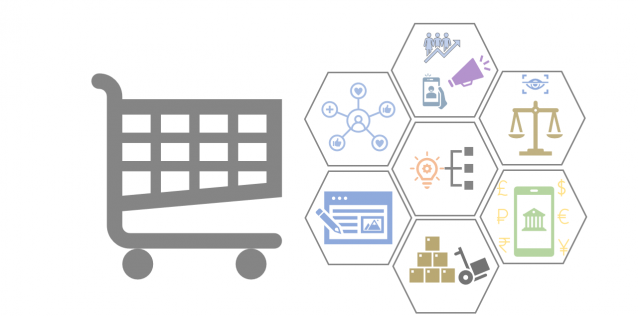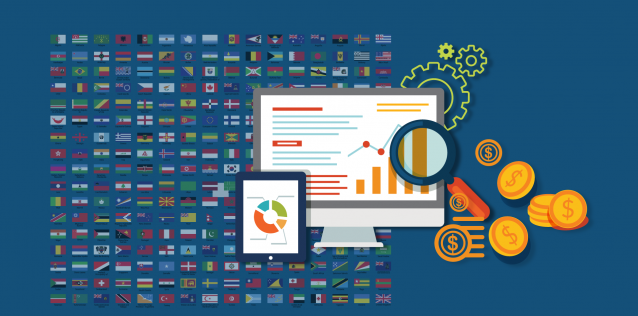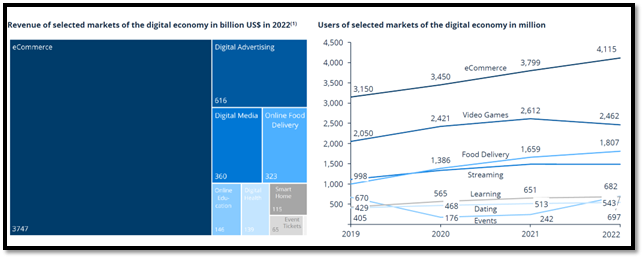Post Pandemic eCommerce
Pandemic Restrictions Initially Boost eCommerce Sales
As the world plunged into COVID pandemic lockdowns in 2020, we saw a distinct boost to ecommerce sales channels as many businesses pivoted to ecommerce for basic survival during the lockdowns. Following the easing of pandemic restrictions in 2021 and we saw a dip in online sales by 2022 as people finally ventured back out into the world.
Although online sales dipped in 2022, we as consumers have been acclimatized towards the convenience of online shopping as is depicted in the positive growth trendline in the chart above. It is projected that this growth will continue through 2023 and continue steadily through 2025. This too is another example of the Impact of COVID Pandemic on eCommerce.
Businesses Adjust to “eCommerce Learning Curve”
Retail sales through an individual business website direct-to-consumers (DTC) have increased slowly since 2019 pandemic lockdowns began. This is driven in part by increased ecommerce marketplace sales, where entrepreneurs and businesses alike have been able to start their online sales that later grow into adding a business website for online sales.
The majority of B2B companies have shifted to a virtual sales model since pandemic lockdowns forced the world into the digital economy. The countries of Japan and South Korea stood out from the rest of the world in the amount of B2B companies that have stayed offline for sales. The shift to remote selling reinforces the importance of ensuring that your website is optimized for international sales.
Looking Forward to eCommerce in 2025 and Beyond
Despite the current desire of a post-lockdown world to return to offline sales, online sales shares are still projected to increase on a global scale from 16% in 2021 to 22% in 2025.
Economic turmoil around the world has also changed the composition of online sales, with discretionary spending on things like electronics and fashion in decline, while spending on other sectors like toys, furniture, beauty, health, persona and household care, beverages, and media grows.
Political turmoil around the world has impacted global optimism, with supply chain professionals in the Middle East & Africa Regions and LatAm & Caribbean Regions more optimistic about increasing ecommerce sales shipments through 2025.
Return to eCommerce Frontline Library Content
Looking for more ecommerce resources?
















